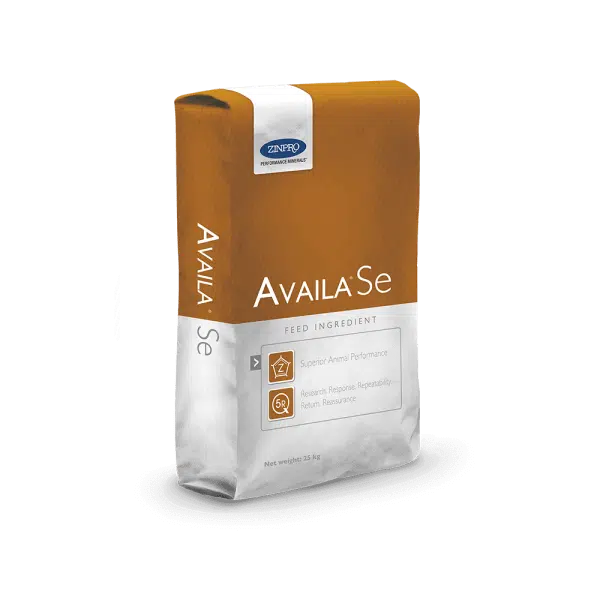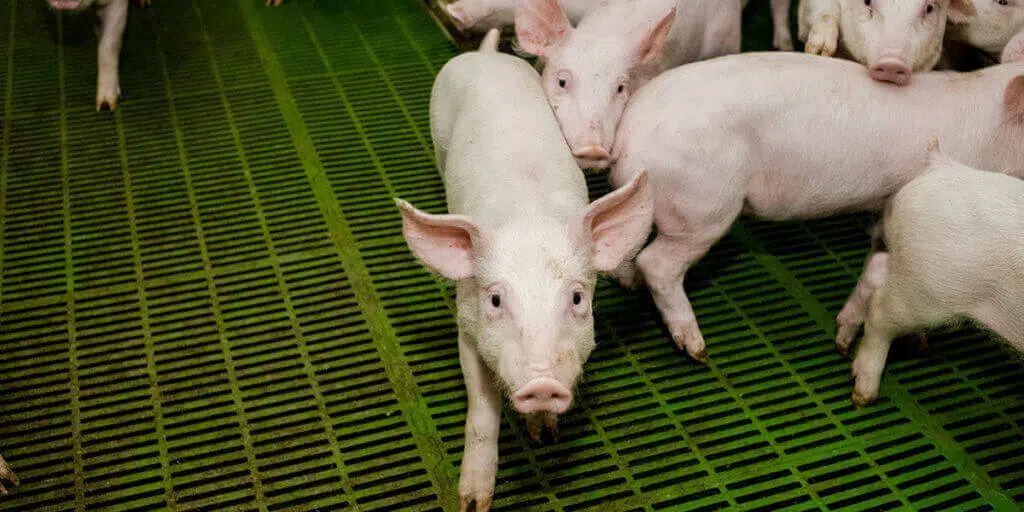This article by Dr Christof Rapp, a lead researcher in swine nutrition at Zinpro Corporation, first appeared in the November 2019 issue of Essential Feed and explains how selenium reduces oxidative stress and improves production.
Livestock and poultry, just like humans, naturally produce toxic substances and reactive oxygen species – small and highly reactive molecules (free radicals) that have important cell signaling roles when maintained at proper cellular concentrations.
While reactive oxygen species (free radicals) play an important role in the immune function, it’s important to have a balance. Animals need the right amount of free radicals, and the right amount of antioxidants to keep free radicals in check. During times of stress, reactive oxygen species (free radicals) levels can increase dramatically, outnumbering antioxidants and lead to cell damage or tissue injury, otherwise known as oxidative stress.
The trace mineral selenium reduces oxidative stress by playing an important role as an antioxidant, helping an animal keep the reactive oxygen species (free radicals) in check.
Suboptimal selenium status is usually caused by a decrease in feed intake during periods of high stress and can lead to a number of challenges. Challenges from suboptimal selenium status can include an impaired immune response, poor fertility, an increase in embryo mortality, poor growth and feed conversion, as well as poultry carcass drip loss and decreased retail shelf life.
Building higher selenium stores with Availa®Se
During periods of reduced feed intake, animals won’t be able to get enough selenium through the diet to support optimal antioxidant function. At that point, they will rely on stores of selenium in tissues such as muscle in swine and bovine animals, or the egg in poultry. If your animals have built up stores of selenium, you can get through those periods of decreased feed intake.
Sows and cows will mobilise stores of selenium during periods of low feed intake, such as early lactation or late pregnancy, and then will build their stores back up when feed intake increases again.
It’s important for an animal to have those stores built up, and producers will need to provide them with the best source with the highest availability. Due to increased absorption, Availa®Se builds higher stores than any other selenium supplement on the market.

Improve antioxidant function with selenium
The body generates toxic substances, like reactive oxygen species by default, but even more so during periods of high stress and low feed intake. Reactive oxygen species damage cells and cause oxidative stress. In other words, when feed intake is low, the demand for selenium increases and Availa-Se helps to balance the supply and demand of antioxidants.
These periods include late pregnancy and early lactation in cows, sows or reproducing chickens or turkeys. It can also be caused by heat stress or disorders like retained placenta, metritis, diseases, bacteria, viruses or other immune challenges.
Antioxidant function is mediated by selenoproteins, the most well-known of which is glutathione peroxidase (GPx). These selenoproteins help to scavenge and neutralise toxic reactive oxygen species that are formed at an increased level during periods of high stress in livestock and poultry. GPx converts toxic reactive oxygen species, like hydrogen peroxide, to water.
Selenium provides an improved immune response
An animal with a suboptimal selenium status will not be able to respond properly to immune challenges such as mastitis, an infection that causes inflammation in the mammary gland. Immune cells called neutrophils, which are in an animal’s blood circulation, leave the blood vessels to create an immune response at the point of infection and, ultimately, remove the infection. If an animal is facing a suboptimal selenium status, the neutrophils will be slower to leave the blood vessels and will take longer to clear the mastitis. A suboptimal selenium status will also cause lymphocytes — a type of white blood cell in the lymph nodes and the bloodstream that helps fight infection — to do a poor job identifying antigens, bacteria and viruses, leading to a weaker immune response. It will take longer to remove pathogens.

Selenium provides a better start
Feeding selenium from Availa-Se to gestating animals and egg-laying birds allows calves, piglets and chicks to get off to a more successful start at birth or hatch.
In poultry, selenium is transferred to the embryo during incubation. Selenium enriches the egg yolk, which is then consumed by the embryo, helping boost that chick’s ability to mount an immune response. Gestating dairy cows and sows transfer selenium to the embryo through the uterus. By feeding selenium from Availa-Se, you increase the selenium stores in the embryo, calf or piglet.
When gestating cows are fed Availa-Se, it increases immunoglobulin G (IgG) levels in the colostrum, which is then passed on to calves immediately after birth. A calf’s immune system is not yet developed to mount an immune response and relies on colostrum for protection against challenges.
Piglets benefit from increased selenium and increased GPx through their dam’s milk because piglets stay on the sow for up to 28 days while a calf stays on a cow for up to three days. By reducing the number of reactive oxygen species in the embryo, Availa-Se also improves the number of piglets born alive.

Improved milk production and growth
The ability of Availa-Se to improve milk production in dairy cattle ties back to selenium’s role in improving the animal’s ability to mount a rapid and robust immune response. Selenium helps reduce mastitis and control inflammation, which allows an animal to utilise more nutrients for milk production. Furthermore, higher milk consumption by offspring leads to higher weaning weight, helping piglets grow faster. For example, a pig that is 1 kg heavier at weaning would be 3 kg heavier at the end of the nursery phase and 7 kg heavier at finishing.
Availa-Se can also reduce the amount of drip loss in poultry. Drip loss is the shrinking – loss of moisture – of a poultry carcass while it is hanging in the processing plant cooler. The moisture loss occurs because of damaged cell membranes. The antioxidant function of Availa-Se improves the integrity of cell membranes and prevents moisture from leaking from the muscle cells, therefore reducing drip loss.

Sustainable reproduction
Selenium’s role as an antioxidant is responsible for improving semen quality. Semen is rich in lipids, mostly unsaturated, which means they are very prone to oxidation and oxidative damage. Semen that suffers oxidative damage will have poor viability. For poultry, this will also result in fewer fertile eggs. While higher fertility doesn’t lead to hens laying more eggs, it does result in more chicks produced from the same number of eggs. In swine, a highly available source of selenium like Availa-Se helps to develop longer and heavier embryos.
Availa-Se: Unique trace mineral, patented technology
Availa-Se utilises similar patented technology as our well-proven and time-tested Availa®Zn, making it more stable and soluble than any other selenium supplement on the market. It is superior to selenium yeast and selenomethionine.
To learn more about how selenium reduces oxidative stress and how to include Availa®Se in your dairy, swine or poultry nutrition programme, contact your Chemuniqué representative today. You can also read the original article here.
Robyn Joubert is the marketing manager at Chemuniqué, contact Robyn at 074 252 3333 / robyn@chemunique.co.za.









